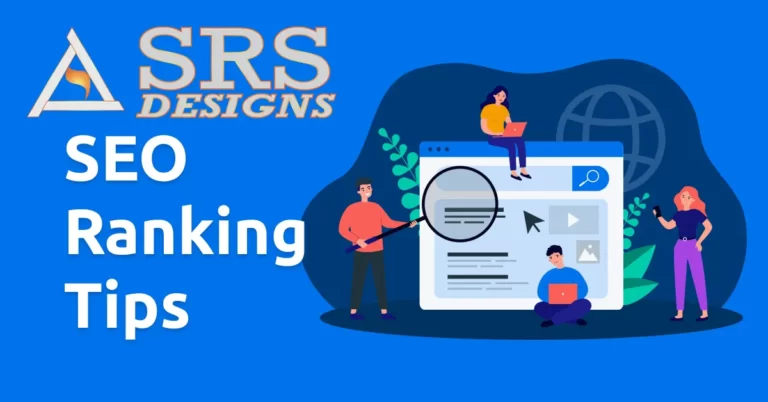Basics of Search Engine Optimization, Part 1
Simply put, what is search engine optimization?
Optimizing a website for search engines (SEO) helps increase the number of people who find the site through natural search results. Here, you focus on activities that raise your website’s visibility and position in a search engine’s unpaid results.
For what reasons is search engine optimization crucial?
There is a large pool of potential customers looking for your services online. However, you won’t get far unless you put out some work, as many others will no doubt share your ambitions. Because of this, SEO is crucial. It helps prove to Google that you deserve a high search engine ranking.
I’m curious in the advantages of SEO.
Most people just look at the top few results, so if you can improve your search engine rating, you should see an increase in visitors. Search traffic, in contrast to that of other channels, is typically steady and unengaged. This is because the average monthly search volume is quite stable.
The ratio of search traffic to total website visits
The “free” search traffic is another perk. Given the high cost of advertising, this is a major development.
We believe that organic search brings in about 1.4 million unique visitors every month. Getting the same number of visitors through search ads would set us back about $1.7 million monthly.
Value of ahrefs.com’s Organic Traffic (approximate)
SIDENOTE. There is no such thing as a cost-free visitor acquisition method. SEO takes a lot of time and energy.
What methods do you employ for search engine optimization?
There are five main components to SEO:
The hunt for relevant keywords. Investigate the questions that are being asked online.
Making stuff up. Create material with searchers in mind.
Search Engine Optimization (SEO) focused on a single page. Strive for complete transparency in your writing.
Incorporating links into an existing website. Collect endorsements from reputable external sources to boost your site’s credibility.
Seo (Search Engine Optimization) Techniques. Facilitate the process of search engine discovery, crawling, and indexing.
Our SEO primer focuses primarily on these tactics.
Phase 2: Establishing a Foundation for Effective Search Engine Optimization
Setting up your website for search engine optimization success can make your SEO efforts that much more manageable. Let’s have a look at some potential approaches.
Do yourself a favor and invest in a quality domain.
If you currently have a domain name and are concerned about its suitability for search engine optimization, rest assured. Keep in mind these two features of a great domain when you look around.
Internet address: domain
There should be a catchy phrase or two here. Don’t force keywords where they don’t belong. Using your company’s name without any hyphens or other symbols is usually a safe idea.
Bad and good domain names as examples
Identifier for a Primary Domain Name (TLD)
This is the portion of a domain name that comes after the main domain. It doesn’t matter what TLD you use for SEO purposes. [1] Of course, we recommend.com because it is the most common and widely used extension. It is acceptable to use either the international top-level domain (.org) or a country-specific counterpart when promoting a charitable organization. Using a ccTLD (such as.co.uk) is acceptable if your firm operates solely in a single country outside the United States.
Avoid top-level domains (TLDs) like “.info” and “.business” due of their negative connotations. Yet having one is by no means a fatal condition. A legitimate, high-ranking website is still within your reach.
Make use of a web-based content management system.
Create and maintain your own website with the help of a website platform. You can divide them into two categories:
Sites that host other sites. You don’t have to worry about a thing. The company will host your site, provide you with premade templates, and enable you to make changes to the site’s content with no knowledge of HTML or CSS.
Internet-based systems that don’t rely on a hosting service. In addition, these enable you to make changes to your content without having to touch any code. The main distinction is that you have to provide your own hosting and set up.
Website hosting examples that are hosted rather than self-hosted
Most search engine optimizers advise using a self-hosted, open-source system like WordPress because:
Changes can be made to it as needed. The source code is available, so you can make any changes you desire. Additionally, there is a sizable group of programmers who have extensive experience with the system.
The functionality can be expanded upon. Millions of plugins, many of which are geared toward search engine optimization, can be added to increase its usefulness.
However, a hosted solution is often the best option if you place a premium on convenience and assistance. The standard SEO features offered by any of the major players should be adequate for the vast majority of websites.
Find a reliable web server and use their services.
A web host is required for every hosted service. These will save your website to a server that may be accessed by anyone with an internet connection. When deciding, keep in mind the three S’s:
Security. Obtain an SSL/TLS certificate immediately. or at least a nod to the non-profit Let’s Encrypt, which issues free certificates.
Location of the server. The transmission delay between the server and the visitor is significant. Select a host whose servers are located in the same nation as the bulk of your visitors.
Support. The best service is one that is available at all hours. Before you sign up, use the above questions to gauge the quality of their customer service.
HAD ANY IDEA?
With the use of a content distribution network, server placement can be optimized (CDN). This makes many copies of your site stored on various servers across the world, ensuring that it is always being provided from the most convenient location for the user. Don’t worry yourself silly over this. It’s possible to add a content delivery network (CDN) at a later date if you discover speed is an issue.
Make it so that users have a good time.
Pages that provide a good experience for visitors are prioritized by Google.
[2] Let’s check out a few options for doing so.
Make use of HTTPS
If visitors’ personal information is vulnerable to hackers, that’s the worst possible scenario for your website. Always use SSL/TLS encryption wherever possible.
Pick a style that you find appealing.
A website that seems like it was built in the ’90s will never attract modern users. A website should appear attractive and reflect the brand even if it isn’t redesigned every few months.
Make sure it works well on mobile devices.
Now, more people use their mobile devices to conduct a search than use a desktop computer.
[3] So, make sure your site is as as user-friendly on mobile as it is on a computer.
Make sure the font is large enough to read easily.
Many different types of devices are used by internet users today. Make sure that your material can be read by everyone using any device.
If you’re trying to study, don’t let adverts and pop-ups distract you.
As much as we all despise commercials, they can be useful. In that scenario, skip the annoying interstitials. The search engine rankings of pages containing these elements may suffer. [4]
A quick load time is essential.
In both desktop and mobile search results, how quickly a page loads matters. However, this does not imply that page refresh rates are of paramount importance. This only impacts the slowest performing pages. [5] [6]
Build a well-organized website.
Both human users and search engine crawlers should be able to navigate your site with ease. That’s why it’s crucial to organize your content into meaningful levels. Making a mental map is a great tool for this purpose.
A Guide to Website Organization
You can think of an internal link as a branch on the map that leads to another page within the same website.
UX and SEO both greatly benefit from internal linking for several reasons:
Search engines can more easily discover new content thanks to them. If Google can’t locate a page, it can’t index it.
They aid in spreading your site’s PageRank. Google’s search functionality relies heavily on PageRank. In order to determine a page’s worth, it examines the number and quality of other pages that connect to it. Google continues to employ it even now. [7]
Useful for giving search engines a sense of your page’s content. That’s something Google takes into account by inspecting the anchor text—the words in a link that readers can actually click on. [8]
Build your URLs sensibly.
URLs are crucial because they provide search engines more information to work with when indexing a page. The format of your website’s URLs is often up to you on many internet platforms. WordPress offers five distinct permalink structures:
simple: website.com/?p=123
Date and organization: March 4, 2021, Website.com, SEO Basics.
URL: website.com/2003/04/seo-fundamentals/
Website id: 865.website.com
Title of Blog Post: http://www.site.com/seo-fundamentals/
When designing a new site, it’s best to opt for the most transparent and informative layout possible. In this case, the name of the post. Making drastic changes to an existing website’s URL structure is usually not recommended.
Put in an SEO add-on.
Basic search engine optimization features are often built into most website platforms. Install an SEO plugin, though, if you’re using WordPress. Implementing even fundamental SEO recommended practices is challenging in the absence of one. You can’t go wrong with either Yoast or Rank Math.
Using Google: Third and Final Part
You may speed up Google’s crawling and indexing of your sites by ensuring they are optimized for search engines. However, Google site submissions can hasten this process. Because of this, even if no other websites link to yours, Google will still be able to find it.
Finding or making a sitemap and submitting it to Google is the first step in submitting your website.
Sitemaps are used to direct search engines to the most vital parts of a website. Usually, a sitemap can be found in one of these locations:
site.com/sitemap.xml
site.com/sitemap index.xml
Look in site.com/robots.txt if you don’t see it there.
Sitemap included in robots.txt file as an example
If you have looked everywhere and still can’t find it, you probably don’t have one and will need to make one.
Sitemap Submission
You may do this with the help of Google Search Console (GSC). It requires only a couple of milliseconds.
Google sitemap submission guidelines.
How to Measure Search Engine Optimization Results, Fourth Section
Keeping tabs on and analyzing SEO results is important before diving into the actual implementation of SEO. Not a simple task, but that’s what this article is about.
Natural flow of visitors
In other words, let’s begin with the most basic question. Your efforts are succeeding if you’re seeing an increase in organic website traffic.
Positions of keywords
One further positive indicator is an improvement in search engine ranks for your focus keywords.
HAD ANY IDEA?
Vanity metrics include things like organic traffic and keyword rankings. While monitoring them is not a waste of time, they typically have little to no bearing on marketing or commercial objectives. Metrics with real-world relevance to the company’s success should be prioritized. There are three main types, and we’ll discuss two of them here.
Here’s an example: assume you’re monitoring just one term and you notice that all of the top results on Google are really pages on your own site. Your site’s Visibility is 100% due to the fact that it receives all feasible clicks from that term.
Let’s imagine your website is at the very bottom of Google’s results, surrounded by pages belonging to your rivals. Your Visibility is less than 100% since some users are directed away from your site.
An increase in Visibility is another promising indicator that your SEO efforts are bearing fruit.
Lessons Learned
In order to increase a website’s traffic from natural search results, search engine optimization (SEO) must be used.
You can achieve this by improving your position in natural search results.
You won’t get very far in search results without investing in search engine optimization, or SEO.
With a high ranking, you can expect a steady stream of visitors each and every month at no cost to you.
Search engine optimization (SEO) includes keyword study, content production, on-page SEO, off-page SEO, link building, and technical SEO.
Setting up your website for search engine optimization success can make your SEO efforts that much more manageable.
You can speed up Google’s discovery and indexing of your site by uploading a sitemap, but in most cases, the search engine will identify and index your site on its own.





